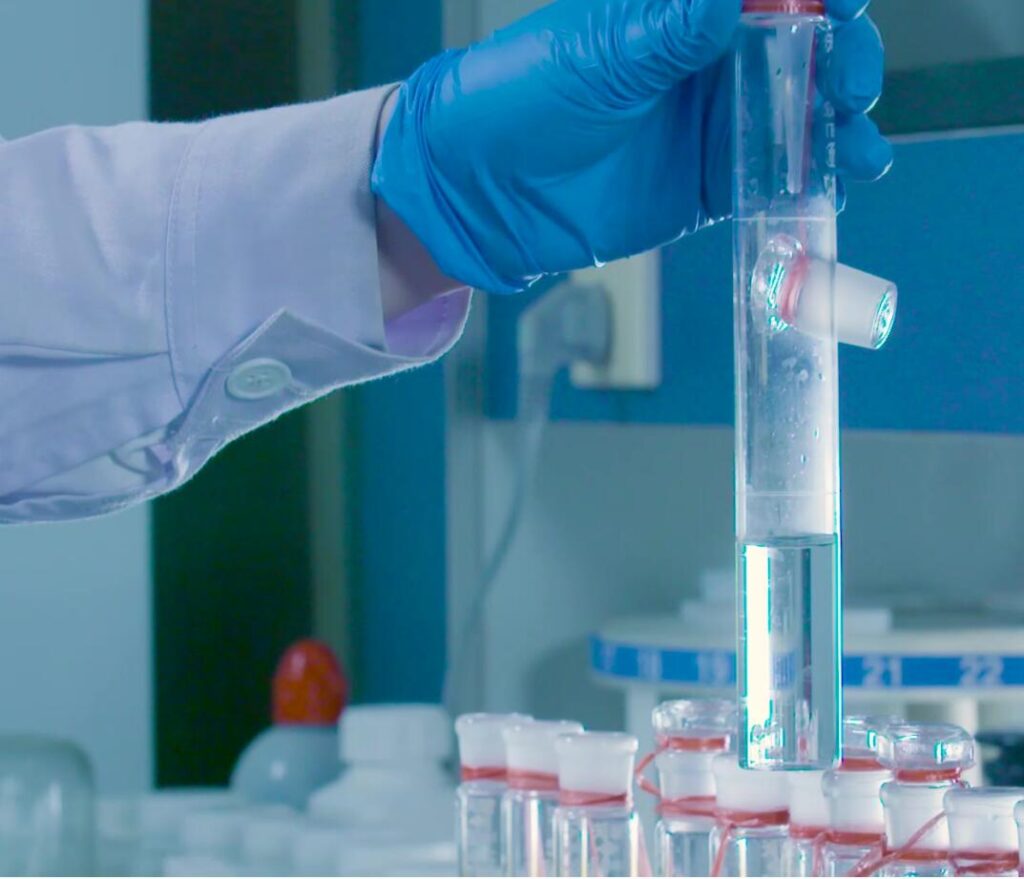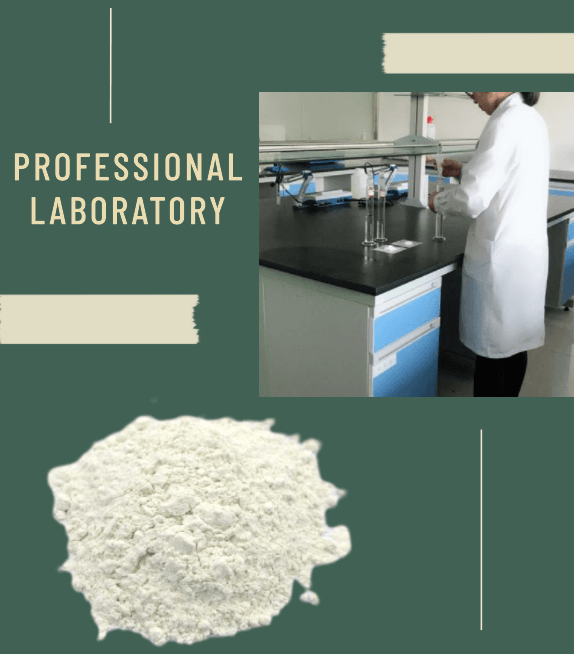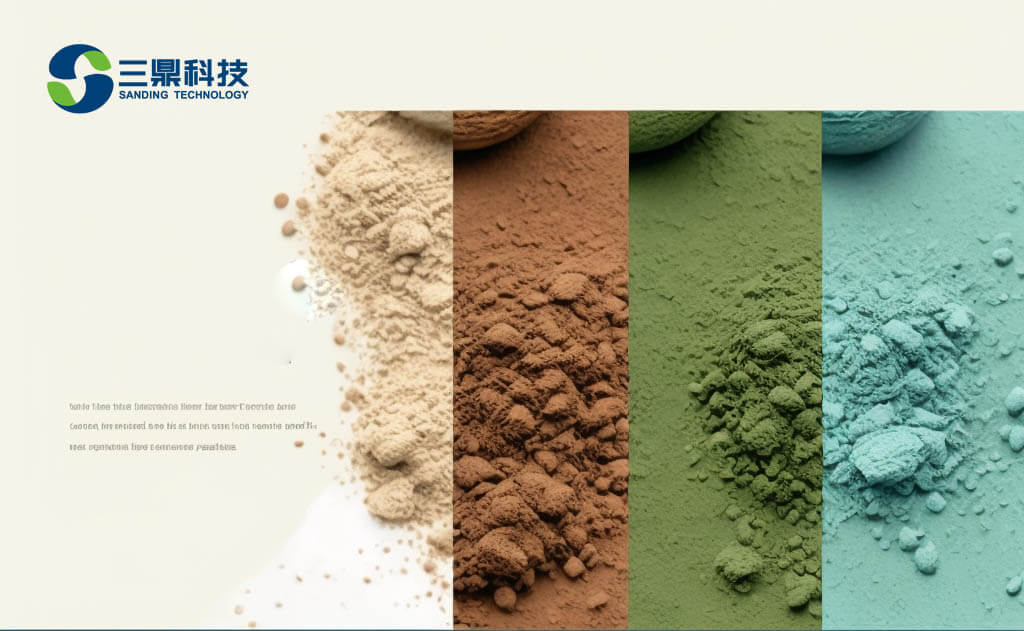Research and Prospect of Bentonite Modification and Its Use in Retarded Fertilizer Media
The annual crop damage caused by plant diseases and pests is about 20% to 40% worldwide. Effective control of plant diseases still lies in applying pesticides, such as fungicides, insecticides, and herbicides. Although chemical fertilizers have many advantages, such as high efficiency, speed, and convenience, they can also adversely affect non-target organisms, ecosystems, and physical health. In addition, during or after use, about 90% of fertilizers are excreted through soil melting, volatilization, and other forms, reducing pesticide utilization and effectiveness. Bentonite cation exchange level is strong (GEC), adsorption capacity, and large specific surface; its structural characteristics make it a natural and non-polluting mineral material with a rich, high quality, and low price. Currently, bentonite and modified composite materials are mainly used in factory wastewater treatment, protective materials for waste disposal sites, soil heavy metal adsorption, and construction materials.

Kurzbaum, for example, uses a composite adsorbent material that removes phosphate from dairy wastewater and domestic sewage. In contrast to bentonite itself, the composite material has a high adsorption capacity and a speedy adsorption rate. In construction materials, bentonite has excellent adsorption capacity, small hydraulic conductivity, and excellent specific surface. Applying polyvinyl alcohol such as Dai (PVA) modified bentonite improves the circulation of the mortar, reduces the water absorption of the slurry, and improves the adsorption capacity, thus improving the up-to characteristics of the wall. In terms of heavy metal removal, the soil is harmful to heavy metal ions copper (Cu), zinc (Zn), nickel (Ni), chromium (Cr), cadmium (Cd), and lead (Pd). It is a potential health risk. The significant adsorption of heavy metals by bentonite from small to large are Ni < Cr < Zn < Cd < Cu < Pb.
Bentonite has a rich history, is inexpensive, and is of general practical value, but as a retarder, pesticide is underreported. Suppose bentonite is to be made into a fertilizer with a retardation effect. In that case, it is necessary to understand the basic structure and advantages of bentonite, its modification, and application status to facilitate the precise control and release of retardation fertilizer. Based on this, this paper modifies bentonite. It summarized bentonite as a carrier for beneficial microorganisms, insecticides, herbicides, and fungicides, looking forward to the future development prospects and goals of the comprehensive utilization of fertilizer.
1. Bentonite structure and modification
Bentonite in China has a wide distribution, easy to extract, shallow, and complete variety of advantages, mainly in Guangxi Province, Xinjiang Uygur Autonomous Prefecture, Inner Mongolia Autonomous Region, Jiangsu, Hebei, and Shandong Provinces, the composition of 26.5%, 16.0%, 12.0%, 7.2%, 6.1% and 5.5%, respectively.
Natural bentonite is an inexpensive and environmentally friendly adsorbent. Recently, it has been used to absorb and remove heavy metals and organic matter. To ensure the adsorption and removal of natural bentonite, it can be modified with inorganic acids and organics, positive ionic surfactants, inorganic metal halides, and phosphates.
1. Structure and characteristics of bentonite
Montmorillonite as the main component of bentonite is a hexagonal hydrated aluminosilicate minerals, its chemical classification for (Na) (Al3.3 Mg0.7) Si8O20 (OH) 4nH2O, bentonite structural features (Fig. 1) for the two external silica-oxygen (Si8O2) tetrahedron sandwiched between an aluminum-oxygen (Al2O3): nano-layer structure consists of a 1 accounted for the ratio; the structure of its lamellar crystalline layer ( Thickness of about 1nm) by the same oxygen atoms connected to the neighboring layers by the van der Waals force and electrostatic fusion, silicon oxide tetrahedron in the Si4 + easy to be Al3 + demolition, aluminum oxide octahedron in the Al3 + easy to be Zn2 +, Mg2 + demolition cheap positive ions, resulting in the surface of the bentonite clay and the indoor space of ionic imbalance, so that the permanent negative electricity, the lamellar structure in the exchange of positive ions (Ca2) +, Na +, K + etc.) was born to achieve equilibrium, and the formation of a new layer of bentonite clay. ) of the birth of the balance to make it chemically smooth.
Nature’s natural bentonite, mainly calcium-based bentonite and sodium-based bentonite, has a strong cation exchange capacity (CEC), specific surface, moisturizing and water storage capacity, adsorption capacity, low cost, compatibility, widely used in drilling mud, stop leakage wall adhesive, radioactive wastewater purification agent, organic dyes and heavy metal adsorbents.
2. Bentonite acid modification principle and application
Bentonite acid treatment is essentially H + and silicate acid reaction so that acid hydrolysis H + and the positive ions between the lamellae carry out ion exchange. In contrast, the Al3 +, Mg2 +, and Fe3 + acid modification process does not change bentonite’s original primary structure and composition. Still, it reduces the solid-state force, interlayer spacing expansion, sulfate or iron oxides, and other impurities. They result in increased specific surface, porosity, and gas adsorption levels.
Common acid modifiers contain inorganic and organic acids. Inorganic acids mainly have hydrochloric acid (HCl), nitric acid (HNO3), and sulfuric acid (H2SO4), primarily sulfuric acid (H2SO4), citric acid (C6H8O7) and humic acid are most commonly used in inorganic acid modification for bentonite modification, and the adsorption performance area is progressively improved after modification.
The activity specification directly reflects the acid-modified bentonite performance specification, but different acid concentrations have other damage to the structure of modified bentonite. At low concentrations, the activity of modified bentonite increases with increasing acid content, but at high concentrations, the activity of modified bentonite decreases with elevated acid concentration. The reason may be that the exchange of low concentration, half-small H + and half through the large interchangeable positive ions, did not destroy its structure. Still, with the elevation of acid concentration, the layer spacing is too large, and positive ions are replaced, resulting in the splitting of the molecular formula.
In the sulfuric acid-activated bentonite phase (Fig. 2), the silanol groups in the surface layer of Angkawijaya et al.+ bentonite could be further protonated to produce positively charged groups. The protonated groups promote the adsorption of Pi based on electrostatic interactions. Unlike inorganic acids, organic molecules contain carboxyl (COOH) groups, which can better enhance chelating heavy metals and improve the adsorption capacity of bentonite. In addition, the fusion of humic acid-modified bentonite and urea can significantly reduce the N2 damage caused by soil NH3 volatilization and N2O discharge, enhance the plant’s utilization of bottom fertilizer, and promote plant growth.
3. Bentonite organic modification principle and application
Bentonite organic modification is essentially a substitute for organic matter or organic groups, then water molecules or exchangeable positive ions within the lamellar system, thus forming organic modified bentonite with covalent bonds, coupling bonds, ionic bonds, or van der Waals forces.
Common organic modifiers include sodium dodecylbenzene sulfonate (SDBS), cetyltrimethylammonium bromide (CTAB), octadecyldimethylammonium (SMB3), octadecyldimethylphenylphenylammonium chloroform chlorophenyl ammonium chloroform chloroform (ODMBA), hexaquaternarytrimethylammonium bromide (HDTMA), dodecyl dimethyl trimethylammonium bromide (DDTMA) and cetyltrimethylammonium bromide (BTMA). BTMA) bentonite solid layer positive ions and organic positive ions are interchangeable; natural bentonite can be modified to hydrophobic lipophilic organic bentonite, revised bentonite layer spacing expansion, solid-state storage space expansion, and organic pollutants absorbent. Adsorption specifications for acid dyes organic bentonite are affected by the length of the alkyl chain of the surface activator; the longer the carbon chain length, the higher the adsorption capacity and the specific surface does not affect adsorption.

In soil heavy metal removal and adsorption, organic bentonite and different heavy metal ions with other mechanisms, Cu2 + and Cd2 + Hg2, mainly through cation exchange, Hg2 + is physical adsorption and distribution, Cr3 + and As3 + according to the specific adsorption and electrostatic respective adsorption. Organic modified bentonite key used in industrial organic dyes, industrial waste gas (toluene, cyclohexane, xylene, and toluene mixture), absorption of pollutants in the petroleum and petrochemical industries, and landfill leachate (organic pollutants, halogenated hydrocarbons, ammonia, solids, sulfides, heavy metals, etc.).
4. Inorganic modification principle and application of bentonite clay
Application of Na +, Fe3 +, Al3 +, and Mg2 + metal ions as modifiers of halides and phosphates are bentonite inorganic modification of the general way; its hydrolysis of metal cations can be balanced on the surface of bentonite negative electricity.
The adsorption performance of inorganically modified bentonite is related to the amount and properties of the loaded modifier. At low load-bearing capacity, the adsorption capacity of adjusted bentonite increases with increasing load-bearing capacity. On the contrary, when the weight-bearing capacity is too high, the metal clusters will block the pore channels of the adsorbent into the active point, thus reducing the adsorption capacity of the adsorbent. Yang et al. found that the adsorption of Pb2+ by sodium carbonate (Na2CO3)-ion exchange, electrostatic attraction, a surface hydroxyl group capture, and chemical precipitation cause modified bentonite. Magnetic, catalytic reaction of the modifier to carry out modification of bentonite can better enhance the adsorption characteristics of bentonite.
CUFe2O4-modified bentonite can effectively remove Hg0 in the gas; the mechanism is that CUFe2O4 enhances the active site of bentonite, catalyzing the conversion of Hg0 into Hg2 + granular mercury [Hg (P)].
Loaded metal cations (Cu2)+, Zn2+, and Ag+) inorganic modified bentonite, besides enhancing adsorption properties, also has a particular antibacterial, deodorization, and catalytic reaction.
Pajiarito et al. with ZnSO4.7H2O to modify bentonite, zinc-modified bentonite obtained based on the control of the release of Zn2 + on Mycobacterium luteum and rice paddy rice fungus inhibitory effect can also reduce the pungent odor produced by the natural rubber (NR) with AgNO3 modified bentonite with potent inhibition of bacterial effect and catalytic reaction, can be green malachite (MG) dyeing agent Carry out a catalytic reaction, as do newly isolated bacteria in wastewater and sludge (ISOSS) and Escherichia coli (Ec.oli) with good bacteriostatic vigor.
2. Bentonite and composite materials as fertilizer media research dynamics
Fertilizer plays an irreplaceable role as a modern agricultural input, plant disease, and pest control, improving crop quality and maintaining global food security. However, traditional pesticide dosage forms have low utilization rates, non-targeting, and high residual rates and must be overused to achieve preventive effects. After use, only 0.1% of the fertilizer reaches the target organisms. 99.9% of the fertilizer is in the environment through soil dissolution, volatilization, spray drift, runoff, microbial degradation, and sticking to the crop surface.
Residual fertilizers can find their way into soil, water bodies, atmosphere, and crops and accumulate in agricultural products, animals, and seafood, endangering human health. Thus, the development of fertilizers with degradation and environmental responsiveness (pH), temperature, light, etc.).)) Temperature, light, etc.), environmentally friendly nanomaterials as a carrier for biopesticides, with high reliability and compatibility, can reduce the harm and residue of pesticides and enhance the efficacy of fertilizers.

Bentonite is a rich, low-cost, non-toxic, porous, significant surface area potential fertilizer substance commonly used in microbial fungicides, insecticides, fungicides, and herbicide adsorption substances; it has a substantial development and application value.
1. Beneficial to microbial absorption media
Microbial fungicide has the advantages of being green, safe, and compatible, and its comprehensive utilization suffers from the harm of media structure and functional properties.
Bentonite is generally not acid-modified, organically modified, or inorganically modified bentonite as beneficial microbial media. Studies have shown that the immobilization level of bacteria on the carrier lies in the initial adhesion between the media surface and the bacterial cells, and the adsorption process consists of four steps:
① A large number of bacteria gathered on the surface of the media;
② Initial adhesion of germs to the media surface;
3.From reversible adhesion to irreversible adhesion;
④ formation of a stable biofilm.
In addition, the physical properties of the cells and carriers and the chemical properties of the environment are called the leading role in the fixation phase, Mg2 in the dry fixation capacity, and the + composition in the media; the surface charge is correlated with the microorganisms’ properties.
Bejarano et al. demonstrated that bentonite could be a potential medium for the plant-promoting bacterium Paraburkholytofirmans (PsJN). pH The adsorption specification of the buffer solution from 5.5 to 9 diminished as the pH value increased. In addition, the potential specification of the surface of the media affects the adsorption and immobilization of bacteria, i.e., the greater the surface potential, the greater the adsorption of pathogens.LI et al. prepared hydrophobic stearic acid that better loaded Raoultellaplanticolars-2 (Gram-negative bacteria, EPS caused weak) and Bacillusubtilssl-44 (Gram-positive bacteria. EPS caused vital) two kinds of beneficial bacteria; in comparison, the gram-positive bacteria have strong adsorption, the adsorption principle is acid-base hydrophobic interaction, not Lifshitz-van der Waals force and electrostatic interaction.
2. Retardation of insecticides
Bentonite is generally used as a composite material as a carrier for insecticides. The principle is to use bentonite adsorption, the specific surface characteristics of extensive composite material. Suppose the response to alkali stimulation release, modified starch-organic bentonite composite material is based on the solution insertion method of preparation. The blended material packing rate is high and can be continuously manipulated in the water release.
Alginate is a water-soluble polysaccharide, in solution, easy to crosslink with divalent positive ions (Ca2) phase in line with + and Mg2 +) to produce hydrogel, generally as a fertilizer manipulation of the release of the composite media based on the sol – bentonite clay to be used to suspect that the gel made / sodium alginate nanocomposites to the Fick spreading of the control and release of imidacloprid insecticides, the release amount increases as the bentonite clay The amount of release increased with the rise of bentonite.
In addition, the bentonite is modified with positive ionic surfactants to obtain organically modified bentonite. This promotes the bentonite to produce more imidacloprid in the interlayer spacing, then controls and releases the imidacloprid.
3. Retardation of herbicides
The chemical fit point of the adsorbent material is an essential factor in measuring its adsorption properties, and fewer chemical appropriate points will affect its adsorption efficiency.
Organic modification of bentonite is a critical way to improve the chemical fit point. Thus, organic bentonite is often used in herbicide absorption and controlled-release media. The absorption and release behavior is related to the modifier’s apparent density (surfactant) density in the lamellar structure and the spacing between the bentonite layers. The higher the packing density of the modifier in the layered structure, the slower the diffusion of the herbicide. When the bentonite layer spacing increases, it is beneficial to the release of the herbicide, reducing the effect of apparent density on the herbicide to achieve the effect of controlled release.
Bentonite absorption of herbicides is spontaneous and exothermic; the absorption process is divided into two stages:
① With the increase of the size and bearing capacity of the carbon chain of the modifier, the adsorption rate mainly occurs on the surface of the modified bentonite.
② In the internal diffusion control link, the adsorption rate decreases slowly with modifier carbon chain size, bearing capacity, and length increase. This process occurs mainly in the solid layer of modified bentonite. There are two types of modified bentonite, among which HTMA-bentonite has the best adsorption properties and absorbs prochloraz based on hydrophobic interactions. In contrast to the original drug, the organic bentonite clay significantly slowed the release of the agent.
4. Retardation of fungicides
Pesticide formulations, in the release of the relevant components of the delay, the longer the efficacy of the continuous time, can continue to release the active ingredient of the carrier system, which has been the focus of research. Singh compared fumonisin (dithiocarbamate) as a fungicide kaolin and bentonite carrier manipulation of the release effect and found bentonite manipulation of the release of fertilizers release slower than the kaolin, the release of the inconsistency of the Fick propagation.
Liu Yanhui et al. chose the pre-impregnated adsorption method to prepare the oxacillin retardant. With the increased bentonite loading table active dose, the adsorption amount first increases and then decreases, and the release rate is related to the temperature. When the temperature is large, the release rate is faster.
In addition, organically modified bentonite can adsorb fungicides and reduce their particle size surface tension to achieve synergistic effects. For example, adding organobentonite to the water emulsion spiroxamine reduces its particle size and facilitates the particle size distribution, thus changing the stability of the water emulsion. Organic bentonite, hexaconazole, and additives were physically blended, and a 5% aqueous suspension of hexaconazole was successfully made. The suspension has a reasonable degree of floating security, organic bentonite on the adsorption of fungicides is also affected by the system pH fungicides itself characteristics, low acidic environment (pH) <3) organic pesticides adsorption is quiet, alkaline environment (pH) > 10) only alkaline triadimefon adsorption increased, acidic fertilizers metanaphthyl, ketopropyl, methyl parathion has a solubility, the adsorption rate is reduced.
3. Application prospects of Bentonite Clay
Developing low-carbon, environmentally friendly, constantly releasing fertilizers is essential for plant disease control. Still, the production field of fertilizers with retardation efficacy is cumbersome and costly, and they cannot be released intelligently.

In addition, the media prepared based on chemical combination has a low yield, and very few scholars have developed targeted retarded coagulation fertilizers based on the characteristics of plant pathogens, most of which are improved from the material and medical field effectiveness. On the other hand, silica nanoparticles, nanogels, MOF materials, and fertilizer media with retardation efficacy have high application costs, low fertilizer loads, and the actual application will cause a large amount of fertilizer loss, resulting in a certain degree of environmental pollution.
Bentonite is a large specific surface with solid adsorption capacity materials in pesticide dosage processing and pest control, and it has a substantial practical value. However, the development and application of bentonite can extend beyond its plastic properties; it should also consider using bentonite modification, mainly in.
① According to the differences in application scenarios, the development of a specific pH value, temperature and humidity, light, magnetic field, and enzyme activity of intelligently controlled release fertilizer substances;
② For different prevention targets (disease), carry out targeted modification, develop slow coagulation fertilizer with induced and adsorbed target organisms;
③ For different use methods and preventive characteristics, carry out formulation modification and develop retarded-coagulation fertilizers that can be sprayed, rooted, nested, scrubbed, etc., to facilitate practical application;
④ According to the different characteristics of the fertilizer molecule (pH), bentonite carries out organic acidic modification or alkaline modification, the production of fertilizers with the same pH value as the fertilizer material, to avoid loading after the melting of the active fertilizer ingredients.
Thus, the future of bentonite and modified composite materials is suitable for targeted release of pesticides, especially soil-borne disease control.
